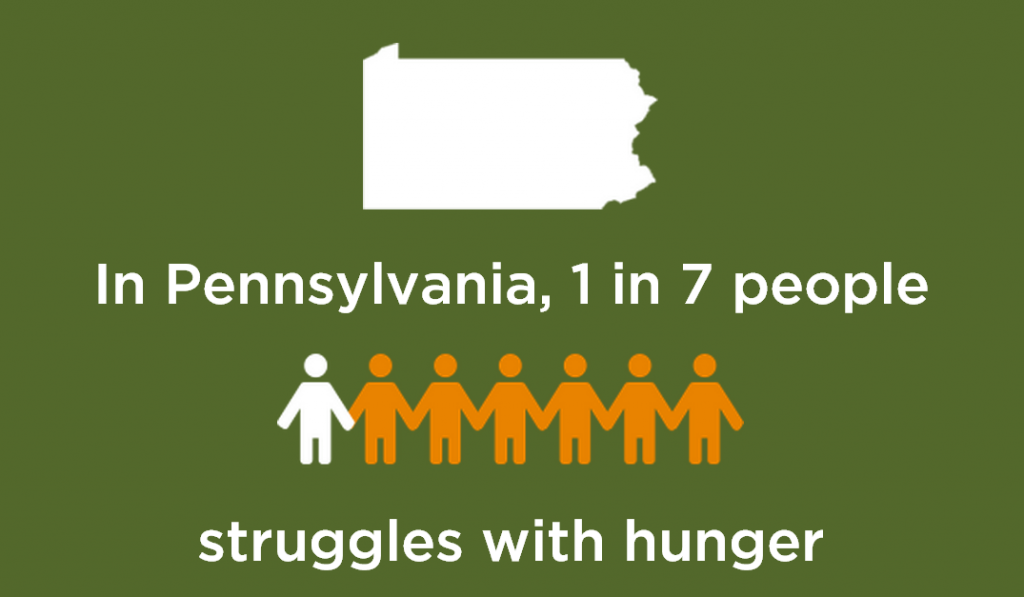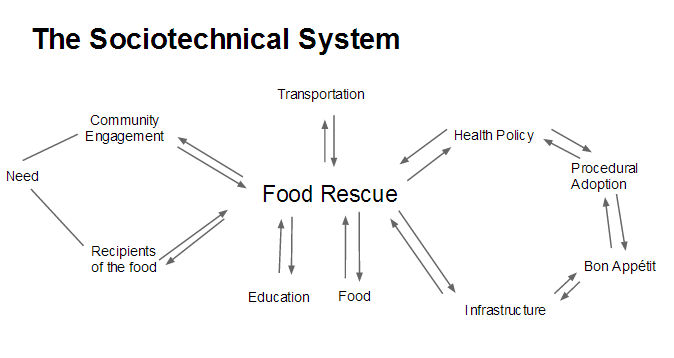Introduction
What are some of the problems that kids might think are hard to solve? Finding a cure for cancer, world peace, and solving world hunger?
Solutions to these problems are seemingly unattainable. However, many people have continued to develop solutions to these problems. One such contributor to solving both hunger and global warming is growing a comprehensive food recovery network. Universities around the country and world have been the first to make strides to eliminate food waste. The combination of available student volunteers and high volume of food waste make Lafayette College and other peer institutions excellent candidates for meaningful food rescue programs. A food rescue program is the practice of safely retrieving edible food that would otherwise go to waste, and distributing it to those in need. As a result of salvaging this food, the College also avoids the adverse affects that increased volume at a landfill has on greenhouse gases. Check out this video to better understand what a food rescue program is and what it is trying to accomplish.
An established Food Rescue and Recovery system at Lafayette College is an important evolution in the development of a sustainable community. In the United States more than a quarter of edible food is wasted and the energy required to produce this wasted food is calculated as approximately 2% of annual national energy consumption (Cuéllar and Webber). Aside from environmental considerations, food rescue systems, especially from college dining facilities, can provide immeasurable impact to food shelters that are starved for resources. Specifically…

While this is certainly an obtuse figure that is not immediately solved by participation of one small institution, the need for providing for those going without food is prevalent. The inception of food rescue programs at universities across the country will prove to be important tools to garner momentum for responsible use of food resources nationwide and eventually globally. It is impossible to solve the problem of national and global food waste and hunger with one quick fix. The scale of the problem is too large to tackle with one single action. It will take the combined actions and movements of many people, groups, organizations, colleges, universities, restaurants, and more to help solve this problem. It is our hope that joining the food recovery movement at Lafayette will not only help those in need in the Easton community, but will also raise awareness on the issue of food waste and hunger regionally. Ultimately, relatively small actions are the foundations to taking big steps towards solving these challenges.
Problem Statement:
1. Food is wasted at Lafayette College which contributes to landfills Food waste in landfills is a high source of methane (a potent greenhouse gas)
2. People in Easton have nutritional needs
Our Proposed Solution: Develop a food rescue program at Lafayette College that helps solve two problems through a developed system that connects the surplus food from Lafayette College to those in need in Easton.
Our Goal: Develop a full understanding of the issue by answering the question of: What it would take to implement a food rescue program at Lafayette College? By answering this question we hope that a future student or group of students can use our information to help develop a sustainable food rescue system.
Developing sustainable solutions to this problem must take into account the Social Context, Policy Analysis, Technical Analysis and Economic Analysis of the challenge.
In order to mechanically understand how these aspects fit into the broader picture it is important to note the key characteristics of Food Rescue at Lafayette. Lafayette is a small, private, liberal-arts college. Our study will look into whether Lafayette has the ability to even implement a food rescue program that is worth-while and helpful.
To serve Easton, which has roughly 30% of the community living below the poverty line, is not a simple task (source). Many of the challenges as discussed in further sections of our analysis include that of liability, storage and transportation among others.
In order to overcome these challenges it is imperative to rely on local partners to enable the creation of a food rescue plan. Joel Blice, general manager for the Lafayette College Bon Appetit account, NORWESCAP (The Northwest New Jersey Community Action Partnership), Second Harvest Food Bank will be important stakeholders in tackling this challenge. The system which this site wishes to explore is complex and simple. In one sense, the system is simply taking Lafayette College Dining Services food and transporting it to those in need. It is our mission to discover if it is feasible for Lafayette to achieve this and to understand what it would take.
In another way, a food rescue system represents a complex sociotechnical system.
All of these variables come back to the initial goal, which is simply stated as limiting food waste by means of getting viable food to people in need. The first step in achieving this is understanding what it will take to implement a food rescue program at Lafayette. This website is an accumulation of research on the answer to just that from a social, political, technical, and economic view.


